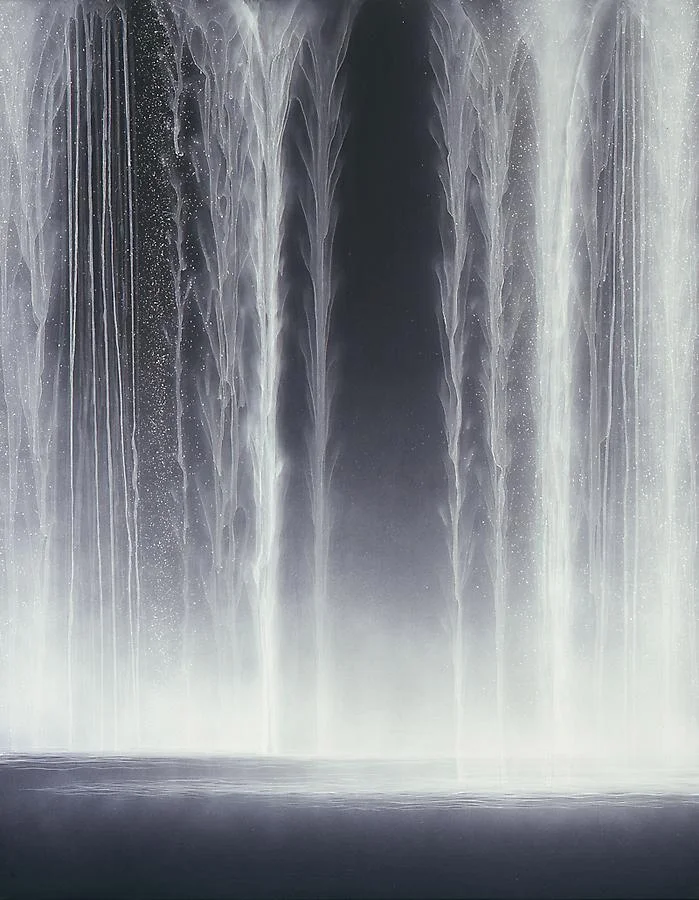A Design Process for Digital Naturalness
/In the last blog, we described existing products and methodologies that incorporate nature into digital design. Broadly the two methodological approaches we discussed were 1) applying patterns or designs found in nature (biomimicry) and 2) bringing nature or simulations of nature into our environments (biophilia). Here we go a step deeper and suggest processes engineers and designers can use to purposefully transform their own subjective states - their experiential and attentional habits - in order to “prime the pump” toward spontaneously noticing design opportunities and making design choices that will tend to instantiate coherence, fractality, and autopoiesis in new digital products automatically. Adopting one or several of the tactics below may throughout the design process may then lead to product users experiencing greater wellness, beauty, and aliveness.
Tactic 1 - Relying on the Senses
Guide: Pay attention to your sensory experiences: seeing, feeling, hearing, smelling, touching, balancing, temperature, passage of time, magnetic fields, etc. Sometimes purposefully refrain from analysis. Can we develop our sense perception to know when tech is good for us?
Inspiration: Analysis is necessary and helpful, but it can also be mutually exclusive with sensory attention. Our senses offer us deeper, richer, more complex and contextual information about the impact of our designs. We have probably over-emphasized the degree to which sensory data cannot be trusted, as we are evolutionarily adapted to use our senses to determine the meanings of various structures in the world. “If we focus on the world around us, and… take our conscious experiences and verbal descriptions with a grain of salt, we can start to improve our ability to trust our perceptual acumen and the structural information we access” (McCabe, 2014).
Tactic 2 - Tacking Toward Pleasure
Guide: Build digital tools which feel sensual and erotic to use rather than anxious and addictive. Feelings can be complex, but aim for a primary feeling of joy or pleasure, the deeper and more satisfying the better.
Inspiration: The meanings we perceive in objects, their relevance for us, are delivered through subtle feelings and intuitions of possibilities. Negative and positive feelings provide useful information about the consequences of the object for us and their subtle, long term impacts. “Ecology is all delicious... Pleasure and delight only become more and more accurately tuned as ecognosis develops” (Morton, 129).
Tactic 3 - Designing Wholes
Guide: Design elements of an object so that they remain in harmonious and consistent, yet dynamic relationship with each other such that the whole they create is coherent and effective from the very beginning, rather than building up one part at a time.
Inspiration: We do not primarily experience our world as many separate objects, but rather as an integrated whole field of structural information and dynamic relationships that stay globally consistent while varying locally over time.
The assumption that we need ‘higher mental processes’ to organize our perceptions of the world comes in part from our unfounded assumption that the terrestrial world in which we live is made of a multitude of separate objects that we must mentally reassemble and insert back into the context from which we abstracted them… On a terrestrial level, nothing is made of separate parts. (McCabe, 2014)
Tactic 4 - Using Nature’s Favored Structures
Guide: Consider using specific structures including spirals, meanders, branching patterns, 120-degree joints, self-similar scaling, and approximately infinite depth/complexity.
Inspiration: Some structures are ubiquitous in nature in part because they minimize energy use while maximizing other useful features. Since we have co-evolved with these structures all around us and because we are made of many of them ourselves, these structures may be particularly useful for creating coherence between ourselves and new technology.
“In matters of visual form we sense that nature plays favorites. Among her darlings are spirals, meanders, branching patterns and 120-degree joints” - Peter Stevens ...Self-similar scaling… minimizes energy use, maximizes growth, and provides structural information about trees and forest systems on all levels of inquiry… We are structured to resonate to the structures of our world. (McCabe, 2014)
Tactic 5 - Entering the Open Ground
Guide: While designing, learn to track and modify your subjective state. Track: 1) what sensory information you are noticing and what sensory information you are not noticing; 2) how aware you are of this sensory information; which sensations are amplified, and which are attenuated; 3) what other aspects of subjectivity are strengthened or weakened; 4) what is in the foreground of your awareness and what is in the background; 5) where (if at all) you are experiencing a boundary between the “inside” and the “outside” of yourself; and 6) which (if any) self-state arises. Aim for: clean intention, tuned attention, sensory acuity, enhanced proprioception, time-space dilation, and selflessness. (Roy, 2018)
Inspiration: The subjective state you are in while developing new technology will influence the deep intention you bring to the design, what you notice, what design options occur to you, what decisions you make, and potentially the subjective experiences of the people who will use your product.
Tactic 6 - Communicating for Participation
Guide: When working with others use procedural, situated, specific, embodied, relational, and process language rather than abstract, managerial, declarative, or symbolic language.
Inspiration: Design is usually a collaborative rather than solitary activity. The collaborative process itself will limit or engender specific characteristics in the designed object (ABPUnimelb, 2016).
References
ABPUnimelb. “Dean's Lecture Series 2016 - John Wood.” YouTube, YouTube, 10 Apr. 2016, www.youtube.com/watch?v=VkuLHVLvrq0
McCabe, Viki. Coming to Our Senses: Perceiving Complexity to Avoid Catastrophes. Oxford University Press, 2014
Morton, Timothy. Dark Ecology: For a Logic of Future Coexistence. Columbia University Press, 2018
Roy, Bonnitta. “Awakened Perception: Perception as Participation." Integral Review, Vol. 14 No. 1, August 2018. https://integral-review.org/awakened-perception-perception-as-participation/
